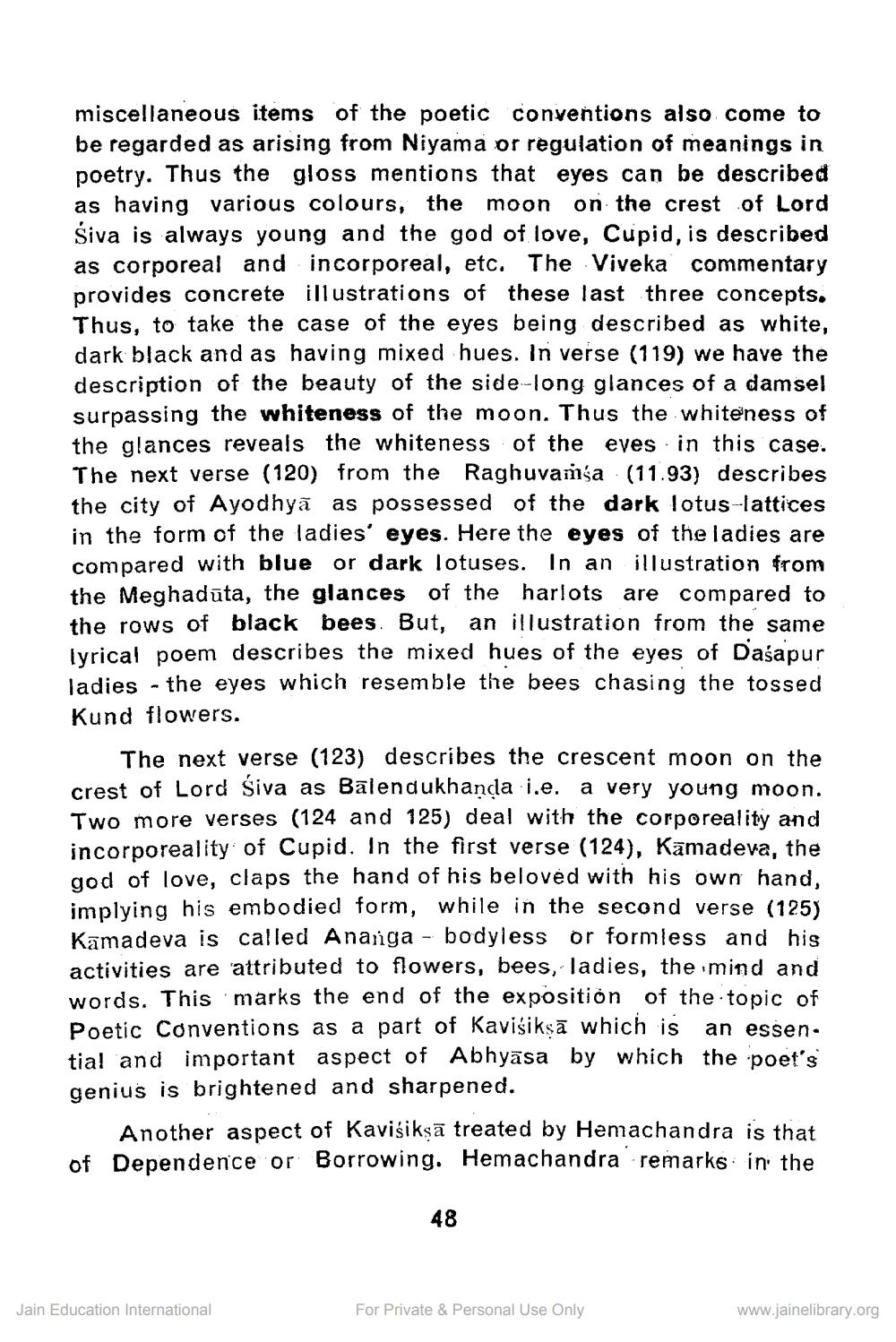________________
miscellaneous items of the poetic conventions also come to be regarded as arising from Niyama or regulation of meanings in poetry. Thus the gloss mentions that eyes can be described as having various colours, the moon on the crest of Lord Śiva is always young and the god of love, Cupid, is described as corporeal and incorporeal, etc. The Viveka commentary provides concrete illustrations of these last three concepts. Thus, to take the case of the eyes being described as white, dark black and as having mixed hues. In verse (119) we have the description of the beauty of the side-long glances of a damsel surpassing the whiteness of the moon. Thus the whiteness of the glances reveals the whiteness of the eves in this case. The next verse (120) from the Raghuvamsa (11.93) describes the city of Ayodhya as possessed of the dark lotus-lattices in the form of the ladies' eyes. Here the eyes of the ladies are compared with blue or dark lotuses. In an illustration from the Meghaduta, the glances of the harlots are compared to the rows of black bees. But, an illustration from the same lyrical poem describes the mixed hues of the eyes of Dasapur ladies - the eyes which resemble the bees chasing the tossed Kund flowers.
The next verse (123) describes the crescent moon on the crest of Lord Siva as Balendukhaṇḍa i.e. a very young moon. Two more verses (124 and 125) deal with the corporeality and incorporeality of Cupid. In the first verse (124), Kamadeva, the god of love, claps the hand of his beloved with his own hand, implying his embodied form, while in the second verse (125) Kamadeva is called Ananga bodyless or formless and his activities are attributed to flowers, bees, ladies, the mind and words. This marks the end of the exposition of the topic of Poetic Conventions as a part of Kaviśikṣa which is an essential and important aspect of Abhyasa by which the poet's genius is brightened and sharpened.
Another aspect of Kaviśikṣā treated by Hemachandra is that of Dependence or Borrowing. Hemachandra remarks in the
Jain Education International
48
For Private & Personal Use Only
www.jainelibrary.org




